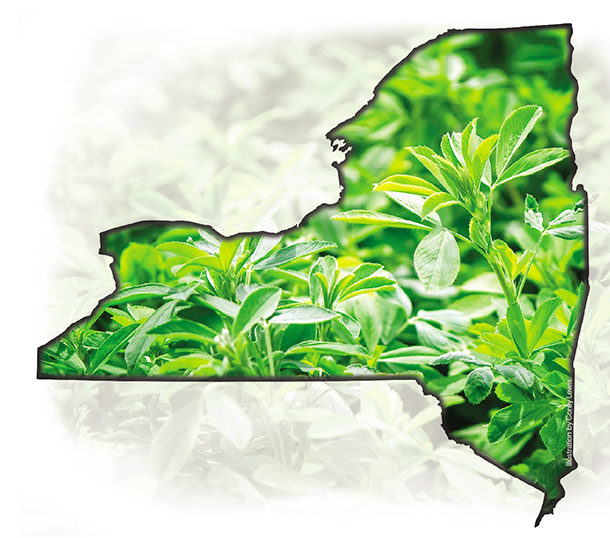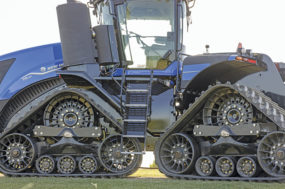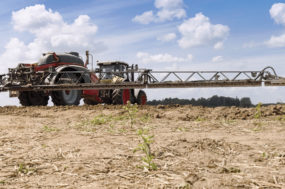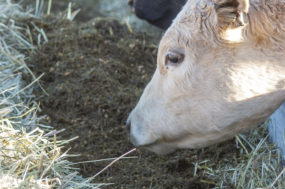Losing the battle to diseases in forages can pose a significant economic hardship to farmers growing forages – both for farmers who grow forages to feed their own livestock or those who sell it in the marketplace.
There are many possible causes for diseases in forages and not all of them are caused directly by pathogens or insects. Problems with forages may also result from poor plant nutrition, such as inadequate fertilization or watering, soil and weather conditions, such as frost or excessively wet conditions, or accidental exposure to an herbicide.
However, in many cases, one or more stress factors may open the door for a pathogen, such as a fungus, to invade a plant. Soils that are in poor condition may prevent proper transfer of nutrients, thus creating an opportunity for pathogens to invade a plant.
Diseases for forages differ greatly around the country depending on environmental conditions. For the most part, however, the pathogens that plague forages can be categorized into those that affect the plant below the ground and those that affect the plant above the ground. Pathogens will attack the roots, stems or leaves of plants.
In all cases, diseases that plague forages essentially affect the plant’s ability to transfer nutrients from the root system, through the stems and into the leaves. Below ground, for instance, nematodes can be destroying the roots of a plant, preventing it from absorbing water and minerals.
In other cases, insects may be eating the leaves of a plant, diminishing the plant’s ability to photosynthesize. Still in other cases, molds or bacteria may be attacking the vascular system in the stem of the plant, again preventing the transfer of nutrients. Generally speaking, legumes are more often plagued with seedling and root diseases, while leaf and stem diseases plague grasses.
In eastern New York, Ron Osofsky, who has been farming and dairying for many years, says that getting a continuously good crop of alfalfa is challenging and essentially comes down to consistent and aggressive management.
In past years, but not so much recently, his alfalfa has suffered from alfalfa weevil and potato leafhopper, with the leafhopper still showing up from time to time. According to Osofsky, managing the leafhopper comes down to mowing the alfalfa before the leaves are significantly damaged.
In the Northeastern U.S., with its cold, snowy winters, a stand of alfalfa that is easily stressed starts to diminish in production after only four years. Winterkill is a problem and varies from year to year depending on the severity of the weather. Osofsky hangs on to a stand of alfalfa as long as possible before replanting.
He’s experimented with adding small amounts of other forages to alfalfa in an effort to improve the stand’s longevity – his results are inconclusive.
In recent years, Osofsky says that weeds have become an increasing problem for his alfalfa, with crabgrass showing up more often in his alfalfa fields. His milk cows graze many acres of mixed pastures in which crabgrass is now established, and he hypothesizes that the crabgrass is coming from manure he spreads on the alfalfa.
He will spray an herbicide on a field with a new planting if crabgrass is pervasive enough.
Osofsky also notes that his crop adviser has suggested he start adding sulfur to the fields, as sulfur levels in the soil are starting to drop. Alfalfa has a particularly high sulfur requirement. This is now necessary because of the reduction in acid rain that, at one time, was a significant issue in the Northeast U.S. ecosystem.
Ironically, even while the acid rain was sterilizing riparian habitat, it was providing adequate sulfur to the fields of the Northeast. That’s no longer the case. Soil testing is a regular part of crop management for Osofsky. The majority of his farmland has a fair amount of limestone, which helps keep the pH up towards neutral in his soils, which is preferable for growing alfalfa.
Soil moisture and poor drainage of fields is another big contributor to plant diseases. It’s well known that alfalfa does not tolerate standing water or heavy soils. Grasses do better in heavier loams, but even they will be damaged if they spend too much time in standing water. Even though alfalfa requires significant amounts of water to grow, it prefers sandier loams and well-drained soils.
Fields that are known to drain poorly simply should not be planted with alfalfa. Osofsky notes that because his alfalfa is predominately on drier, sandier soil, he has no issues with fungal problems, such as black stem disease or leaf spotting.
In many cases, the spores from fungal diseases are ubiquitous, and the only way to manage problems such as spots and rust is through harvest timing. In the case of brown stripe disease in orchardgrass, a common forage throughout the Eastern U.S., the fungus overwinters and produces spores again in the spring during wet, moist conditions.
The problem goes away during warmer weather but returns again when the weather turns cooler. While the fungus doesn’t kill the grass, it does diminish growth. Timely harvesting will control the extent of this disease. For many warm-weather grasses, fungal diseases can be a constant problem.
Diagnosis and effective management of problems with forages comes down to the experience of working with the plant, being aware of the pests and diseases that specifically plague a particular forage and knowing what the cause of a problem is and how to remedy the problem.
Routine observation of fields is the first line of defense in controlling diseases and pests. A field of alfalfa, for instance, that is showing signs of yellowing is easily seen from the pickup cab.
Walking fields to observe the density of an alfalfa stand will help determine what sort of problem may be affecting the crop. Careful record keeping will enable farmers to monitor growing conditions from season to season.
Managing diseases in forages caused by pests or pathogens ultimately comes down to sound and effective management of a stand or field of legumes or grasses. Any practice that reduces stress and promotes vigor is a step in the right direction for reducing potential crop failure.
Avoiding overgrazing in pastures, as well as overmowing a hay crop – where both reduce the plant’s ability to photosynthesize – will aid in reducing diseases.
Periodic rotation of crops, which help break a disease cycle in a particular field, and maintaining a harvesting schedule that allows for the carbohydrate replenishment in the roots are probably the most effective management tools for preventing stress factors that lead to diseases in forages. ![]()
Illustration: Illustration by Corey Lewis.

-
John Hibma
- Consulting Ruminant Nutritionist
- South Windsor, Connecticut
- Email John Hibma










